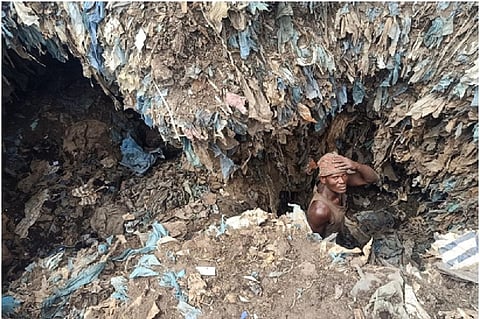Why it’s important to remediate Dar es Salaam’s Vingunguti dumpsite
Dar es Salaam, the former capital city of Tanzania, has been using 11 different sites over the last 30 years for dumping waste.
One of the longest operational dumpsites was located in Tabata. The site was active for nearly 25 years. When the Tabata dumpsite was closed in 1992, Vingunguti dumpsite started as a result of an agreement between the residents and the Dar es Salaam city council.
The site was at a natural depression in an area next to the Msimbazi river. The residents agreed to have the area run as an engineered landfill to control soil erosion on the site.
However, this site was constructed without any high-density polyethylene liner and mechanisms to collect leachate. And the operations were not scientific till 2001. The city’s waste is currently disposed of at a 65-hectare-large Pugu dumpsite.
Vingunguti dumpsite is located in an unplanned informal settlement in Ilala municipal council. The dumpsite covers an area of about six hectares with a volume of 166,000 cubic metres.
It is mostly covered with large uneven piles of legacy (aged) waste. Even after closing, dumped water continued to pile up at the site. Even though the capacity was exhausted in 1999, it was under operation until 2001, when the site finally closed.
Some 20 years after its closure, Vingunguti dumpsite continues to cause huge environmental and health hazards. It is important to note that the dumpsite is located on a sloping piece of land adjacent to the Msimbazi river.
It is bordered by a large-scale abattoir on the northeast side, which still discharges its organic (residues from abattoir) waste onsite. In addition, it acts as a health hazard to the nearby informal inhabitants and constantly emits a foul odour.
The legacy waste lying at the site is likely to contain toxic metals and other contaminants, as reported by many researchers. The site was initially used for disposing of solid waste generated from municipal sources.
Unstable waste piles and smouldering at Vingunguti dumpsite in Dar es Salaam, Tanzania. Credit: Richa Singh
However, the site later started receiving hazardous waste from hospitals and industries. Leachate discharged by the site, adjacent to the Msimbazi river, also has a great risk of spreading diseases to humans and animals.
Presently, Vingunguti site has many “associated environmental problems” such as public nuisance, odour and smoke, as well as occupational hazards to the informal sector working at the site for separating the manure (decomposed biodegradable material).
The site has become a constant source of pollution and has a huge impact on the nearby communities and the informal waste pickers.
Informal waste pickers involved in separating soil-like materials or compost from plastics by using sieves are currently working in very harsh and dangerous conditions.
However, this compost is most likely to contain toxic metals and other hazardous components; therefore needs to be tested before being used. The site contains significant quantities of polymeric waste (mainly plastic carry bags). The site exhibits smoulder, cracks and unstable slopes.
Way forward
The city authority of Dar es Salaam and the President’s Office for Regional Administration and Local Government needs to take necessary steps to ensure that the site is completely covered with clay liner or vegetative cover and closed permanently following all scientific measures.
It is equally critical to restrict further dumping once the site is closed, especially the slaughterhouse residues from abattoirs.
There could be two approaches to remediate the dumpsite: Capping and landfill mining. Capping is a technology where a landfill or dumpsite is covered with an impermeable layer of gravel, silt and high-density polyethylene.
On the other hand, landfill/dumpsite mining involves the scientific process of excavation, stabilisation, treatment, sorting of waste and reclaiming the land.
Capping might appear to be a convenient and time-saving method for dumpsite remediation, but it does not reclaim the land or ensure scientific treatment of legacy waste.
It leaves behind lingering environmental and health hazards. As a result, many countries, including India, prefer landfill mining over capping.
Capping could be a solution for the closure of scientifically designed landfills or dumpsites in eco-sensitive zones where biomining is not possible because of steepness, inaccessible ravines and narrow valleys.
Bio-capping of dumpsites requires at least 15 years of post-closure maintenance to monitor pollution levels in groundwater and surface-water sources and air (especially methane emissions).
Remediation of the existing dumpsites in Tanzania, including Vingunguti, is critical for minimising ground and surface water pollution and associated health hazards.
In addition, a sustainable solid waste management plan based on the principle of circular economy and resource recovery is essential to ensure that only the non-compostable, non-recyclable and non-treatable waste reaches the landfills.



